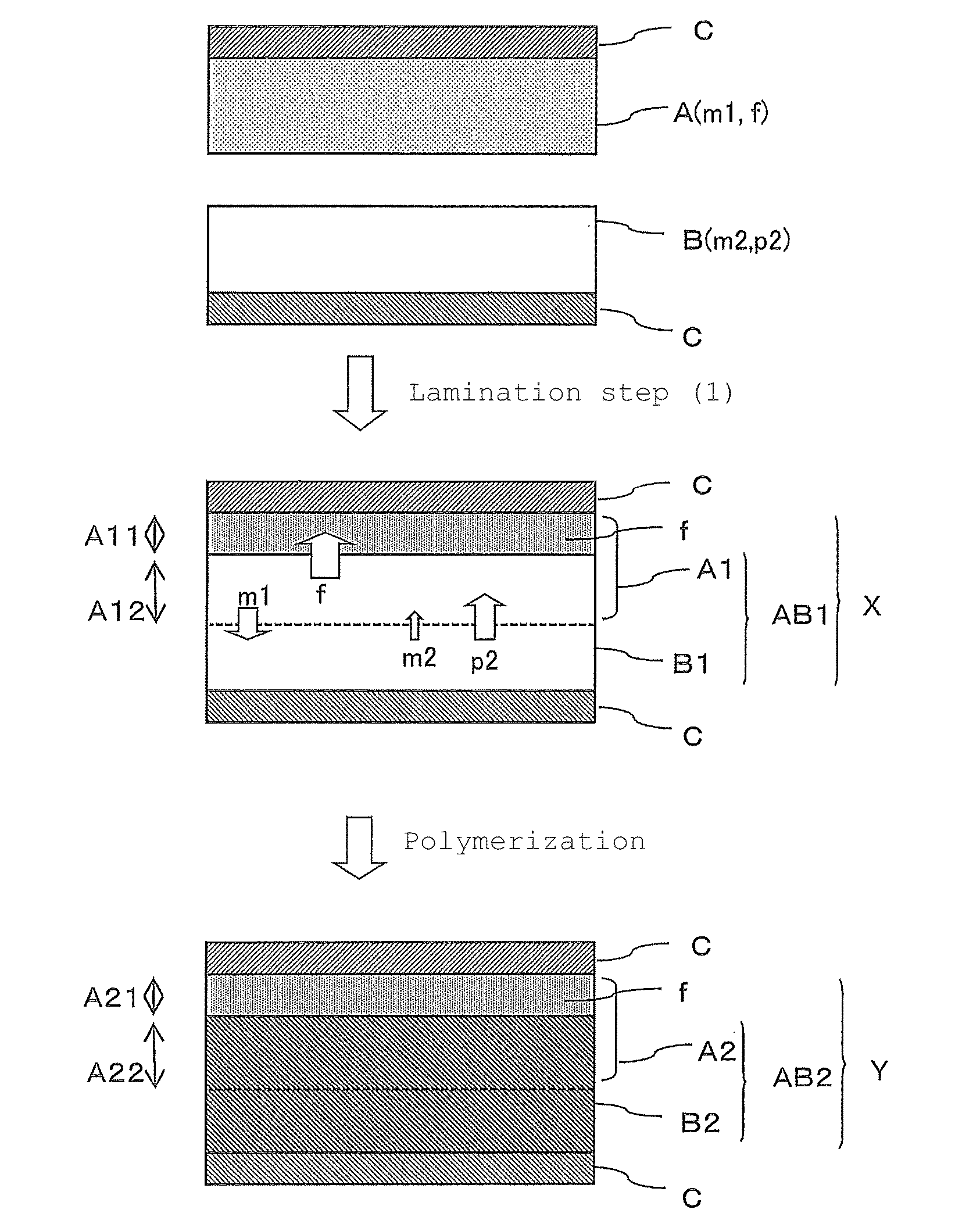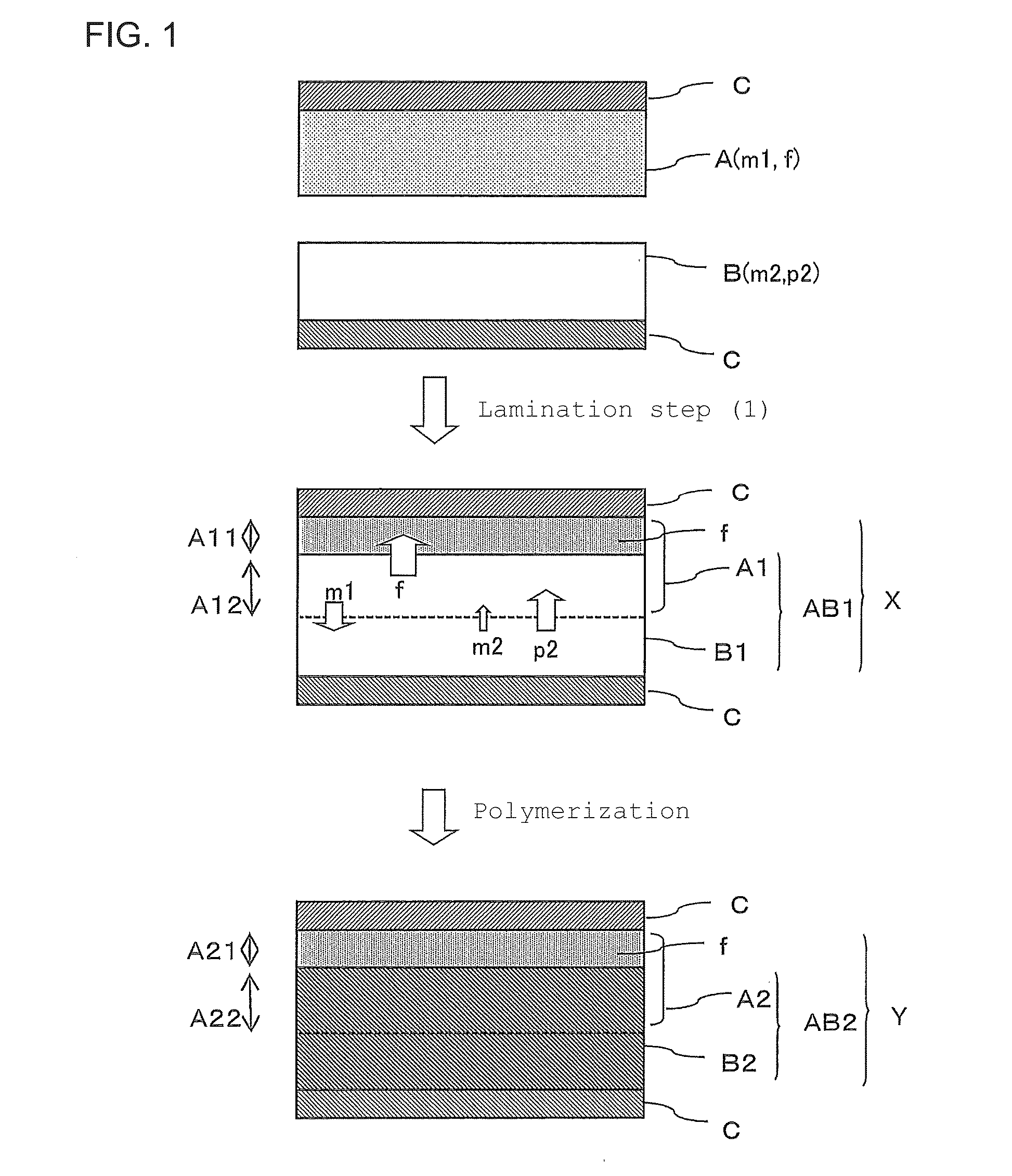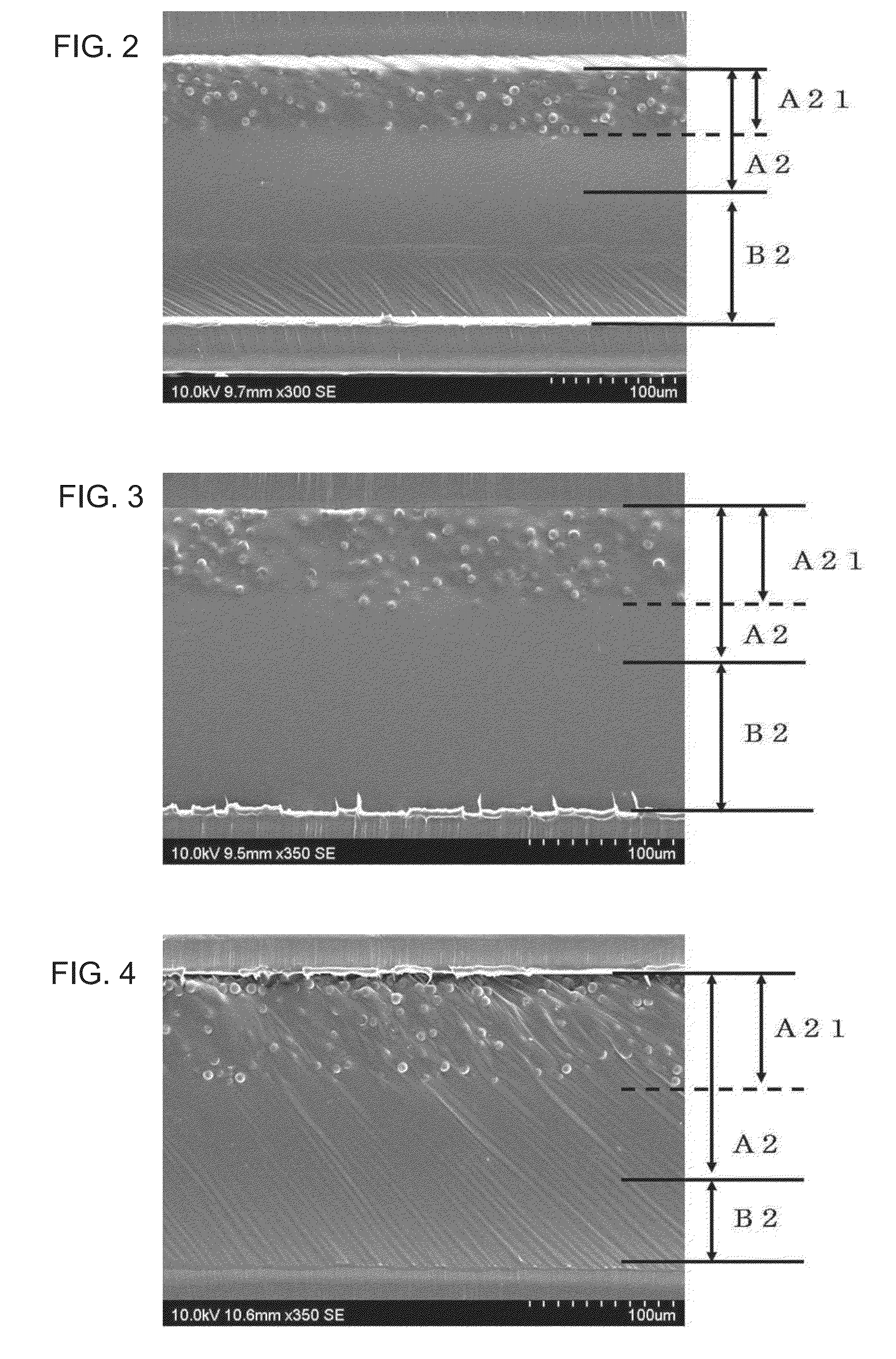Production method of cured multilayer sheet and cured multilayer sheet
a multi-layer sheet and production method technology, applied in the directions of synthetic resin layered products, surface pretreatment, transportation and packaging, etc., can solve the problems of easy delamination between layers, poor tackiness between the substrate layer and the fine particle layer, and difficult formation of layers, etc., to achieve easy preparation of each composition, high productivity, and high degree of crosslinking
- Summary
- Abstract
- Description
- Claims
- Application Information
AI Technical Summary
Benefits of technology
Problems solved by technology
Method used
Image
Examples
production example 1
Preparation of Second Curable Resin Composition (b)
[0130]In a four-necked flask equipped with a stirrer, a thermometer, a nitrogen gas inlet and a cooling pipe, 100 parts by weight of butyl acrylate (hereinafter abbreviated as BA), 0.1 parts by weight of 2,2-dimethoxy-1,2-diphenylethane-1-one (trade name “Irgacure 651” (manufactured by Ciba Specialty Chemicals Inc.) and 0.17 parts by weight of lauryl mercaptan as a chain transfer agent were stirred until being homogeneous, and the mixture was bubbled with a nitrogen gas for an hour to remove dissolved oxygen. Thereafter, ultraviolet rays were applied from outside the flask by a black light lamp, and when an appropriate viscosity was achieved, the lamp was turned off and blowing of nitrogen was stopped, and the mixture was partially photopolymerized (polymer concentration: 67% by weight) to thereby obtain a composition containing a BA prepolymer (hereinafter the composition will be referred to as syrup (s1)). To 100 parts by weight o...
production example 2
Preparation of Second Curable Resin Composition (b)
[0131]To 100 parts by weight of syrup (s1) was added 120 parts by weight of BA to prepare a composition having a BA prepolymer concentration of 30% (hereinafter the composition will be referred to as syrup (b2)). The concentration of BA based on the syrup (b2) is 70% by weight.
production example 3
Preparation of Second Curable Resin Composition (b)
[0132]To 100 parts by weight of syrup (s1) was added 14 parts by weight of BA to prepare a composition having a BA polymer concentration of 59% (hereinafter the composition will be referred to as syrup (b3)). The concentration of BA based on the syrup (b3) is 41% by weight.
PUM
| Property | Measurement | Unit |
|---|---|---|
| length | aaaaa | aaaaa |
| diameter | aaaaa | aaaaa |
| thickness | aaaaa | aaaaa |
Abstract
Description
Claims
Application Information
 Login to View More
Login to View More - R&D
- Intellectual Property
- Life Sciences
- Materials
- Tech Scout
- Unparalleled Data Quality
- Higher Quality Content
- 60% Fewer Hallucinations
Browse by: Latest US Patents, China's latest patents, Technical Efficacy Thesaurus, Application Domain, Technology Topic, Popular Technical Reports.
© 2025 PatSnap. All rights reserved.Legal|Privacy policy|Modern Slavery Act Transparency Statement|Sitemap|About US| Contact US: help@patsnap.com



